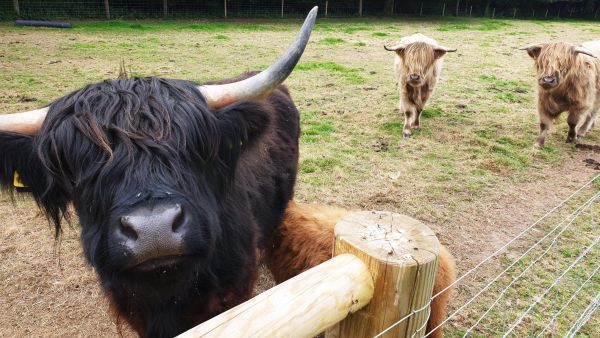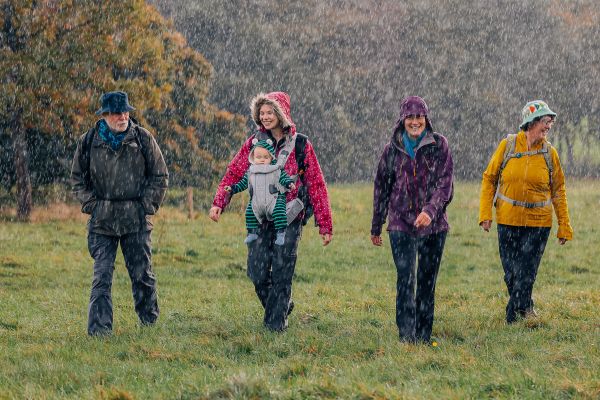How to use level crossings safely

Across England, Scotland, and Wales there are nearly 6,000 level crossings. These can be intimidating to many. This page will help you to understand the different types of level crossings. It includes what the different signs, lights and sounds mean, so that you can use them safely.
What is a level crossing?
A level crossing is a point where the railway meets a road or path at the same level, enabling users to cross safely. Each crossing is unique, with its own local geography and differences in how often trains run. There are two different types of level crossings.
- Passive crossings – On these crossings, there is no warning of a train’s approach unless the train driver chooses to use the train horn. It’s the user’s responsibility to stop, look and listen to check when it is safe to cross.
- Active crossings – Here, the user is warned of a train’s approach through the closure of gates or barriers, warnings lights and/or alarms. This type of crossing can be operated either automatically or manually (by a rail operator).
You may hear or see several things at a level crossing - what do they all mean?
There can be a lot to take in when using a level crossing. And at times it may not seem that clear. Here’s an overview of everything you might see:
- You may see a Stop, Look and Listen sign. This warns the user to be extra careful, as the crossing may not have a visual or audible warning.
- Some crossings have gates that are operated by railway staff who make sure they are used safely, or may be self-operated. When using these, you should make sure that there is no train coming before, and immediately after, opening the gates. You must make sure they are closed after use.
- Some crossings don’t have barriers, but you may see others using a full barrier, which blocks the entire road, whilst others have a half barrier. Do not cross until the barriers are fully raised, even if you’ve already seen a train pass as there may be another train behind it.
- You may see amber and red warning lights. You must stop as soon as the lights come on, whether they are amber or red. It’s important not to cross until the lights stop flashing as there may be more than one train. Some crossings have red and green lights – only cross when the green lights are showing.
- There could be various types of audible alarms: some sound like sirens, some sound like train horns. Do not cross if you hear a warning sound or message.
Things to be aware of when using a level crossing
It’s good to understand the potential dangers when using a level crossing. This enables you to think carefully about what action to take and when.
It can be tempting to think you can make crossings in time – don’t cross in a rush or run. If gates or barriers are closed, or warning lights or alarms are activated, do not try to cross. If the crossing has no barriers or gates, make sure you have plenty of time to get across safely.
If you hear or see a warning, wait until it has finished. You may feel like you wait a while for the train(s) to arrive. There is no set amount of time from a warning starting to the train arriving, and they may be more than one train.
Don’t assume that there is only one train or use previous experience, or a timetable, to guess when the train is coming. Make sure to look both ways and be aware that trains can come at any time.
If you are walking with a dog, make sure that it is on a short lead and always stays with you. If your dog runs into railway land, don’t be tempted to go after it.
Things to consider on a group walk / for walk leaders
If you are planning a group walk, make sure you consider level crossings and check what kind they are in advance. When leading the group, remind everyone to stop, look and listen, before crossing safely.
It is easy to get distracted, especially if you or others are looking at phones, talking, or listening to music. Make sure that everyone stops, looks, and listens to check it is safe to cross.
Using level crossings safely – top tips
It’s good to plan ahead when possible, to see if your walk takes you across any level crossings, and what type they are. Think about the potential dangers involved and remind yourself what the sights and sounds surrounding a level crossing mean. On the walk itself, remember the following:
- Stop, look and listen – follow any signs and instructions.
- Concentrate – don’t get distracted by phones, music, or conversation.
- Check both ways before crossing – if there is a train coming, don’t cross.
- Cross quickly, keeping dogs on a lead. If you are walking with children, keep them close.
- If crossing in a group, make sure there is enough time and space for everyone to cross safely.
- If you are carrying or pushing something (like a pram), make sure that you can get across safely and won’t drop anything.
- Watch your footing – there may be a trip hazard where you cross, even if the ground is level.
- Don’t cross just because the person in front of you has. Everyone should check that it is safe to cross before doing so.
More information
Network Rail has several webpages regarding level crossings and how to use them: Level crossing safety.
You can also learn about our views on level crossing closures in England and Wales, and in Scotland.

How to walk through a field of animals
A field of cows can be an intimidating sight. Find out how to stay safe when walking near cattle and other animals.

A walking first aid kit – what do I need to bring?
By equipping yourself with a few key first aid items you’ll be able to quickly treat any minor mishaps that occur when you are out walking.

7 top tips to stay safe in a thunderstorm
Thunder and lightning can happen at any time of the year in Great Britain. So it’s good to know what to do if you encounter a thunderstorm whilst out walking.